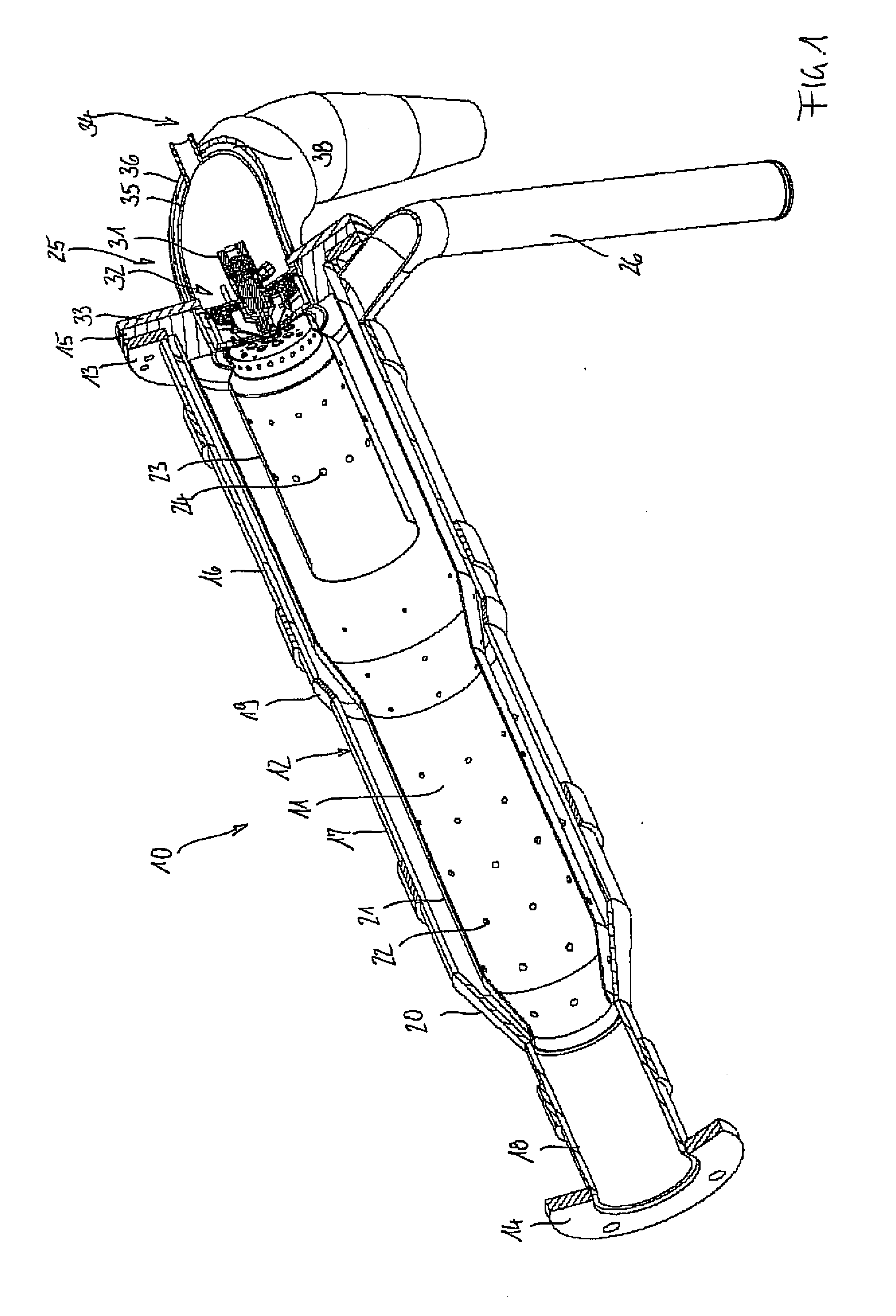Producing ageing gas for exhaust gas after-treatment systems
- Summary
- Abstract
- Description
- Claims
- Application Information
AI Technical Summary
Benefits of technology
Problems solved by technology
Method used
Image
Examples
Embodiment Construction
[0068]FIG. 1 shows an inventive burner 10 with a combustion chamber 11, which burner 10 comprises an outer rotationally symmetric burner sheath 12 which extends between an entry flange 1 and an exit flange 14 and comprises three length portions 16, 17, 18 whose diameter decreases from the entry flange to the exit flange and which are connected to one another via conical transition portions 19, 20. A carrier flange 15 which comprises an outer collar and an inner annular projection to be described in greater detail with reference to the following Figures is threaded to the entry flange 13. The collar centres the entry flange 13 to which there is attached the burner sheath 12. On its outside, the inner annular projection at the carrier flange 15 carries a mixing pipe 21 for returning conditioned ageing gas and extends, at a radial distance, along the length of the first two portions 16, 17 of the burner sheath 12 and of the two conical transition portions 19, 20. From the transition po...
PUM
 Login to View More
Login to View More Abstract
Description
Claims
Application Information
 Login to View More
Login to View More - R&D
- Intellectual Property
- Life Sciences
- Materials
- Tech Scout
- Unparalleled Data Quality
- Higher Quality Content
- 60% Fewer Hallucinations
Browse by: Latest US Patents, China's latest patents, Technical Efficacy Thesaurus, Application Domain, Technology Topic, Popular Technical Reports.
© 2025 PatSnap. All rights reserved.Legal|Privacy policy|Modern Slavery Act Transparency Statement|Sitemap|About US| Contact US: help@patsnap.com



